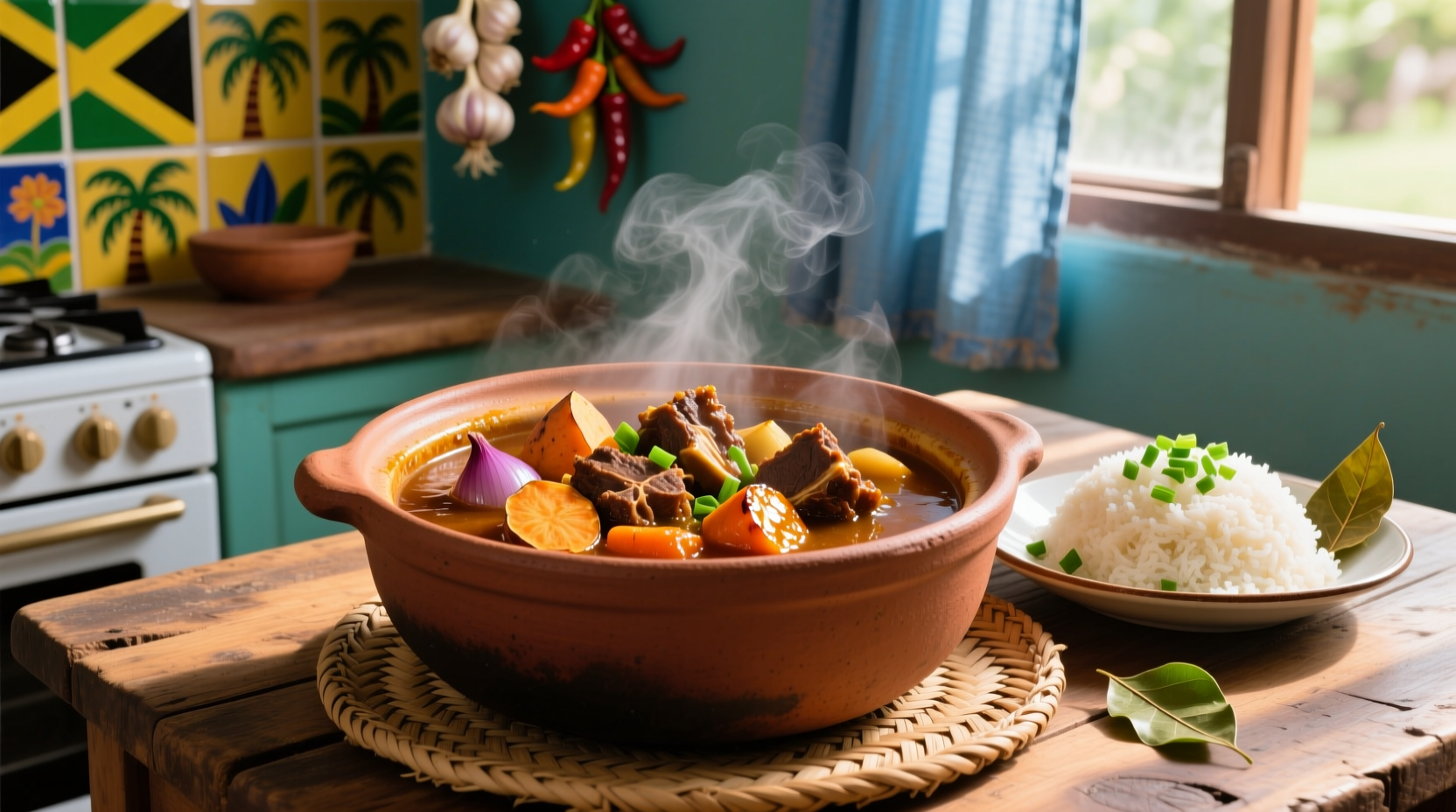Discover the authentic way to prepare Jamaica's beloved comfort food that has captivated palates worldwide. This detailed guide reveals the precise techniques and cultural insights needed to create restaurant-quality Jamaican oxtail in your own kitchen.
Planning Your Jamaican Oxtail Cooking Session
Before you begin, understand that authentic Jamaican oxtail requires patience and proper planning. The entire process takes approximately 4-5 hours, with 3-4 hours dedicated to slow simmering. Jamaican culinary tradition emphasizes the importance of slow cooking to achieve the characteristic tender, fall-off-the-bone texture that defines this national dish.
According to the Jamaica Observer's food history archives, oxtail became a staple in Jamaican cuisine during the colonial period when enslaved Africans creatively utilized less desirable cuts of meat. This historical context explains why the slow-cooking method developed—to transform tough connective tissue into melt-in-your-mouth perfection.
Essential Equipment Checklist
| Equipment | Why It Matters | Authentic Alternative |
|---|---|---|
| Heavy-bottomed Dutch oven | Ensures even heat distribution for proper braising | Traditional cast iron pot |
| Sharp boning knife | For proper trimming of excess fat | N/A |
| Wooden spoon | Prevents scratching while stirring | Carved wooden stirrer |
Ingredient Selection Guide: Building Authentic Flavor
The distinctive flavor of Jamaican oxtail comes from the precise balance of traditional spices. The Jamaica Agricultural Society confirms that authentic recipes always include:
- Allspice (pimento) - Jamaica produces 90% of the world's allspice, and it's non-negotiable in authentic recipes
- Scotch bonnet peppers - Provides the characteristic heat (remove seeds for milder version)
- Fresh thyme - Dried thyme won't deliver the same aromatic quality
- Green onions - Used whole in Jamaican cooking, not chopped
According to research from the University of the West Indies' Department of Food and Nutrition, the unique flavor profile develops through the Maillard reaction during browning, followed by slow hydrolysis of collagen during simmering. This scientific process transforms tough connective tissue into gelatin, creating the signature rich texture.
Step-by-Step Preparation Process
1. Marinating for Maximum Flavor (Overnight)
Combine 3 lbs oxtail pieces with:
- 2 tbsp soy sauce
- 1 tbsp Worcestershire sauce
- 4 crushed garlic cloves
- 2 sprigs fresh thyme
- 1 whole scallion, chopped
- 1 Scotch bonnet pepper, pierced
- 1 tsp ground allspice
Cover and refrigerate for 8-12 hours. This extended marinating time allows the acidic components to tenderize the meat while infusing deep flavor.
2. Proper Browning Technique
Remove oxtail from marinade (reserve liquid). Pat dry thoroughly—this is crucial for proper browning. Working in batches, sear on all sides in hot oil until deeply browned. This Maillard reaction creates complex flavor compounds essential to authentic Jamaican oxtail.
3. The Simmering Process
Return all oxtail to pot. Add:
- Reserved marinade
- 4 cups beef stock
- 2 chopped carrots
- 2 chopped onions
- 2 chopped celery stalks
- 1 tbsp tomato paste
- 2 whole allspice berries
- 1 bay leaf
Bring to boil, then reduce heat to low. Cover and simmer for 3-4 hours until meat is fork-tender. Skim fat periodically for best results.
4. Final Seasoning Adjustments
After cooking, remove oxtail and vegetables. Strain liquid and skim excess fat. Return liquid to pot and reduce by one-third for richer sauce. Adjust seasoning with salt and additional allspice if needed. Return meat and vegetables to sauce to rewarm before serving.
Serving Traditions and Pairings
Authentic Jamaican presentation includes:
- Serving over steamed white rice with the rich gravy spooned generously on top
- Accompanying with traditional sides like festival (sweet fried dough) or roasted breadfruit
- Garnishing with fresh thyme sprigs and sliced scallions

Troubleshooting Common Issues
Problem: Meat remains tough after cooking
Solution: Extend cooking time by 30-60 minutes. Authentic Jamaican oxtail requires sufficient time for collagen breakdown. The University of Florida's meat science department confirms that oxtail's high collagen content needs 3+ hours at 180-200°F to fully convert to gelatin.
Problem: Sauce is too thin
Solution: Simmer uncovered for additional 15-20 minutes to reduce liquid. Alternatively, mix 1 tbsp cornstarch with 2 tbsp cold water and stir into sauce.
Preserving Leftovers Properly
Jamaican oxtail actually improves in flavor after 24 hours as flavors continue to meld. Store in airtight container in refrigerator for up to 4 days or freeze for up to 3 months. When reheating, add a splash of water or stock to maintain moisture.











 浙公网安备
33010002000092号
浙公网安备
33010002000092号 浙B2-20120091-4
浙B2-20120091-4